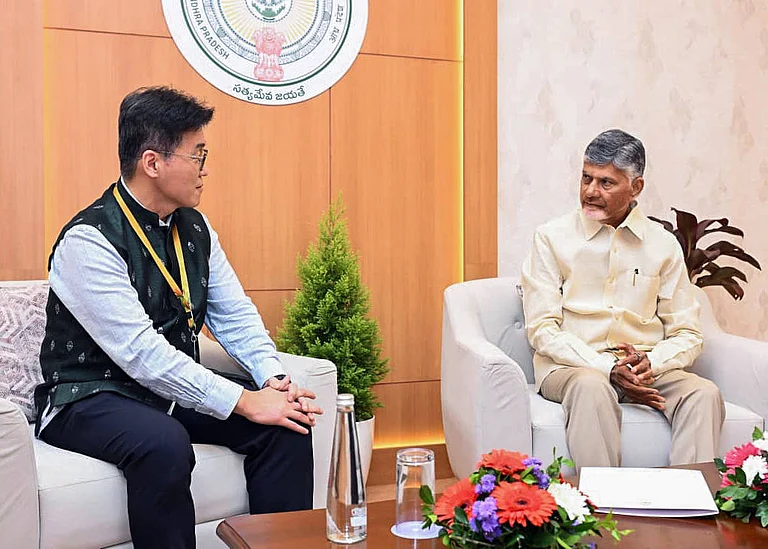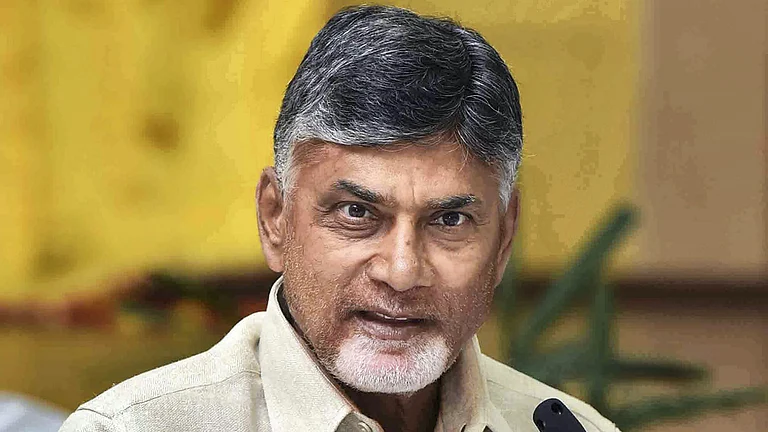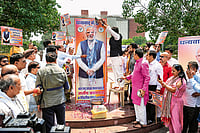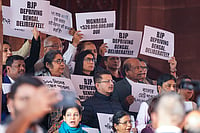
Historically a revered Buddhist site on the Krishna River, Amaravati became the focus of political contention after Andhra Pradesh’s bifurcation in 2014.
The struggle over the state’s capital reflects long-standing caste-based rivalries between the Kammas and Reddys, shaping decisions from the 1950s to the present.
Expert committees have urged a decentralised, environmentally sustainable model for the new capital, warning against repeating Hyderabad’s concentrated development pattern.
Historically, Amaravati is known as the famous Buddhist site located on the banks of the Krishna River. However, since 2014, it has been in the news due to political reasons. After the bifurcation of Andhra Pradesh (AP), the question of the new capital of AP emerged. With the victory of the Telugu Desam Party (TDP) and its alliances with the Bharatiya Janata Party (BJP) and the JanaSena Party (JSP) in the 2014 and 2024 assembly and Lok Sabha elections, Amaravati is, once again, in the limelight.
However, the controversy over AP’s capital did not start in 2014. Ever since the state of AP was carved out of the Madras Presidency in 1953, the political cleavage of the two dominant caste groups—the Kammas and the Reddys—manifested itself in innumerable ways. Veteran Congress leader N. G. Ranga, who hailed from the Kamma community from Guntur, demanded for the first time to make Vijayawada as the capital of Andhra state. However, Neelam Sanjiva Reddy, the Congress leader from Rayalaseema, prevailed upon the Congress High Command under the Jawaharlal Nehru regime to make Kurnool in Rayalaseema the capital of the separated state and succeeded for a short span of time.
Meanwhile, the Vishalandhra movement—to create a single, unified state for all Telugu speakers—was intensified by the Leftists, who demanded the merger of Telugu-speaking regions of the Madras Presidency with Telugu-speaking areas of Hyderabad State (Telangana), which was under the control of monarchical and princely feudal power. After the merging of the Telugu regions in 1956, Hyderabad became the capital of the newlyformed AP. From 1956 to 2014, the dominant caste chief ministers of the Reddy and Kamma castes created a highly centralised capital by locating the entire administrative, technical and academic institutions in and around Hyderabad—a concentrated model of development. The non-local dominant castes grabbed all the resources and local jobs in the government and private sector.
That’s why the separate Telangana state agitation was intensified and the state was bifurcated. However, Hyderabad continued to be the common capital for both states for 10 years, as per the Andhra Pradesh State Reorganisation Act, 2014, (APSRA, 2014). But the TDP’s N. Chandrababu Naidu shifted the entire capital of AP to Amaravati in 2014 itself due to political compulsions.
In response to the provision in the APSRA, 2014, the Government of India appointed an expert committee headed by K. Sivaramakrishnan to recommend a new site for AP’s capital. The expert committee, after a detailed analysis of the then 13 districts of the state, suggested a capital within 1,000 acres of land based on the multidimensional District Suitability Index. The index includes the availability of land and water, essential natural resources, with specific reference to using degraded forest land, and sites with connectivity by road, rail, and air to various districts of AP, and other major cities.
The committee stressed on the importance of preserving local ecology and natural features like water bodies, promoting environmentally sustainable growth, safety from natural disasters—floods, cyclones and earthquakes—and measures for pollution mitigation, including waste management. The committee also suggested minimising the dislocation to existing agricultural systems and resettlement of people, and minimising the cost of construction and land acquisition. The committee strongly recommended a decentralised model of development by suggesting that capital functions and various government departments be distributed across multiple locations instead of concentrating them in a single “super city” like Hyderabad.
In a bid to make Amaravati the capital, the Naidu government set aside the Sivaramakrishnan Committee report, and passed the Andhra Pradesh Capital Region Development Area Act (APCRDA), 2014, for planning, development and regulation. Interestingly, in the 170-page Act, there is no mention of Amaravati as the capital region. However, 34,000 acres of land was acquired, using co-option and coercion, to build the mega capital.
Nevertheless, the process of building Amaravati as the mega capital has given rise to three perspectives. First, that global capital has been flowing in, and therefore, the Naidu government has adopted the Neo-liberal urbanisation process—it has been marginalising the landless labour, the working class, Dalits, tribals and other weaker sections of the society. The second perspective is that the capitalist-cum-highly entrepreneurial coastal Andhra Kamma caste is a prosperous social group and this has been manifesting since the 1980s with the rise of the TDP. However, after the bifurcation, this elite group was deterritorialised and they want reterritorialisation in the form of Amaravati to reinforce their authority. The third perspective is that since the 1950s, political conflicts between the Kamma and Reddy castes have been manifesting in the form of the Communist Party vs. the Congress Party, the TDP vs. the Congress, and from 2014 onwards, the TDP vs. the YSR Congress Party (YSRCP). Therefore, the Kammas want to prove their hold over the politics of AP by defeating the Reddy community, and Naidu’s TDP has been the potential outfit for challenging the Reddy-centric domination in electoral politics.
However, the TDP was defeated in 2019 by the YSRCP, and therefore, there was an eclipse of Amaravati for the last five years—from 2019 to 2024. The YSRCP government repealed APCRDA and introduced the Andhra Pradesh Decentralisation and Inclusive Development of All Regions Act, 2020 (APDIDARA, 2020). As per the APDIDARA, 2020, to enable decentralised and inclusive governance in the state, three capitals have been proposed. These include (1) Amaravati as the legislative capital, (2) Visakhapatnam as the executive capital, and (3) Kurnool as the judicial capital. These regions are construed and notified as per the Andhra Pradesh Metropolitan Region and Urban Development Authorities Act, (APMRUDAA) 2016.
The YSRCP government, while observing the growing protest in coastal Andhra in the form of ‘Save Amaravati’ and anticipating a judicial response, revived the APCRDA Act while repealing APDIDARA, 2020. On March 3, 2022, a threejudge bench directed the YSRCP government to complete the works as per the APCRDA master plan within six months. When the TDP alliance government was formed in 2024, it not only intensified the construction activities at Amaravati, but also proposed to pool in about 40,000 of acres of land for the global capital, which is being branded as the Praja Rajadhani (people’s capital).
For the financial mobilisation to build the global capital, Naidu has left no stone unturned to procure resources from the Union government, borrowing from internal and external financial institutions and appealing for voluntary contributions from the people. However, Naidu’s efforts have been questioned by many, including Vadde Sobhanadreeswara Rao, the TDP’s former minister of agriculture.
These questions pertain to farmers who had already given up their land, but have not had their rights and entitlements fulfilled. People have also raised their voices against the allocation of agricultural land to corporates like LuLu Group. He also raised the question about the proposal to allot 1,500 acres to build the railway station, large-scale allocation to corporate educational institutions and health barons.
Political parties and social activists are also raising a pertinent question: Does Naidu want to build the Praja Rajadhani for the sake of administration—by building infrastructure for the legislative, executive and judiciary—or for a business capital to cater to the interests of the corporates in flood-prone Amaravati at the cost of neglecting backward regions like Rayalaseema and north-coastal Andhra?
(Views expressed are personal)
E. Venkatesu is with the Department Of Political Science, University Of Hyderabad




























